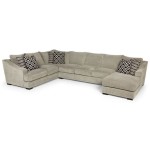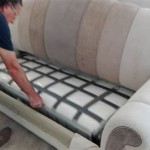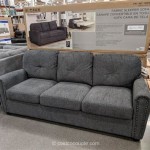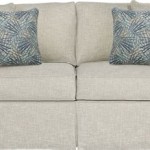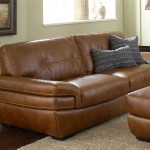Choosing the Perfect Cushion Color for a Dark Grey Sofa
A dark grey sofa serves as a versatile anchor in any living space. Its neutral tone allows for a wide range of decorative possibilities, particularly when it comes to selecting cushions. The right cushion choices can transform a dark grey sofa from a simple piece of furniture into a stylish focal point, adding personality, depth, and visual interest to the room. This article explores the myriad of color options available and provides guidance for selecting cushions that complement a dark grey sofa and enhance the overall aesthetic of a living space.
Understanding the Undertones of Your Dark Grey Sofa
Before delving into specific color recommendations, it is crucial to identify the undertones present in the dark grey sofa fabric. Grey, seemingly a neutral color, can possess subtle undertones of blue, green, brown, or even purple. Observing the sofa in different lighting conditions will help discern these undertones. Natural sunlight often reveals the true undertones, while artificial light can sometimes distort the color. Once the undertone is identified, it becomes easier to select cushion colors that harmonize with the sofa. For instance, a dark grey sofa with a blue undertone will pair well with cool-toned cushions, while a sofa with a brown undertone will complement warmer shades.
Ignoring the undertones can result in a clash of colors, creating an unbalanced and visually jarring effect. If, for example, a dark grey sofa with a cool blue undertone is paired with cushions in warm, earthy tones, the contrast might appear discordant. Paying close attention to these subtleties ensures a cohesive and aesthetically pleasing outcome. Consider placing a white piece of paper next to the sofa fabric to help isolate and identify the undertones more effectively. This comparison can highlight the subtle nuances that might otherwise go unnoticed.
In addition to undertones, consider the texture of the sofa fabric. A textured fabric can influence how color appears. A plush velvet sofa will reflect light differently than a linen sofa, which in turn affects the perceived color of the cushions placed on it. Therefore, it is essential to consider both the color and the texture of the sofa when making cushion choices.
Exploring Color Palette Options for Dark Grey Sofas
The versatility of a dark grey sofa opens up a wide range of color palette options for cushions. The choice depends on the desired ambiance and the overall decorating style of the room. Each color family offers a unique aesthetic and evokes different emotions.
Neutral Tones: Sticking within the neutral color family provides a sophisticated and timeless look. Consider cushions in shades of white, cream, beige, or light grey. These colors create a serene and calming atmosphere, emphasizing simplicity and elegance. Layering different textures within the neutral palette, such as a chunky knit throw pillow with a smooth linen cushion, adds depth and visual interest. The key to a successful neutral palette is to vary texture and tone to prevent the space from feeling flat or monotonous.
Cool Tones: For a contemporary and calming aesthetic, opt for cushions in cool tones such as blues, greens, and purples. These colors evoke a sense of tranquility and relaxation. A dark grey sofa with a blue undertone will particularly benefit from cushions in shades of teal, turquoise, or navy. Adding pops of lighter blue or green can brighten the space and create a more dynamic look. Similarly, cushions in shades of lavender or amethyst can add a touch of sophistication and elegance. The intensity of the color can be adjusted to suit personal preference; for example, a deep indigo cushion will create a more dramatic effect than a soft sky-blue cushion.
Warm Tones: To create a cozy and inviting atmosphere, introduce cushions in warm tones such as oranges, reds, and yellows. These colors add vibrancy and energy to the space. A dark grey sofa can serve as a perfect backdrop for bolder colors like mustard yellow, burnt orange, or deep red. However, it is essential to use these colors sparingly to avoid overwhelming the space. Consider using warm-toned cushions as accent pieces alongside neutral cushions to create a balanced and harmonious look. The use of texture can also soften the impact of bold colors; for instance, a velvet cushion in a warm tone will appear more luxurious and inviting than a plain cotton cushion in the same color.
Jewel Tones: Jewel tones offer a luxurious and sophisticated option for cushions on a dark grey sofa. These rich, saturated colors, such as emerald green, sapphire blue, ruby red, and amethyst purple, add a touch of opulence to the room. Jewel-toned cushions work particularly well with dark grey sofas that have a smooth, plush texture, such as velvet or chenille. The deep, saturated colors contrast beautifully with the neutral backdrop, creating a visually striking effect. Consider incorporating metallic accents, such as gold or silver, to further enhance the luxurious feel of the space.
Contrast Colors: For a more dramatic and eye-catching look, consider using contrasting colors. Colors that are opposite each other on the color wheel, such as orange and blue, or yellow and purple, create a strong visual impact. Pairing a dark grey sofa with cushions in a contrasting color can add energy and excitement to the room. However, it is important to use contrasting colors carefully to avoid creating a jarring or unbalanced effect. Consider using a neutral color as a bridge between the contrasting colors to create a more harmonious look. For instance, pairing a navy blue cushion with a burnt orange cushion, with a cream-colored cushion between them, will create a visually interesting but balanced arrangement.
Considering Patterns, Textures, and Sizes
Beyond color, patterns, textures, and sizes play a significant role in creating a visually appealing cushion arrangement on a dark grey sofa. A combination of these elements adds depth, dimension, and personality to the space.
Patterns: Introducing patterns adds visual interest and prevents the cushion arrangement from feeling monotonous. Consider cushions with geometric patterns, floral prints, or abstract designs. The scale of the pattern should be proportionate to the size of the sofa and the cushions. A large-scale pattern might overwhelm a small sofa, while a small-scale pattern might get lost on a larger sofa. Mixing patterns can also be effective, but it requires careful consideration to ensure that the patterns complement each other. Choose patterns that share a common color or style to create a cohesive look. For example, pairing a geometric print cushion with a floral print cushion that features a similar color palette can create a harmonious and visually appealing arrangement.
Textures: Incorporating a variety of textures adds depth and tactile interest to the cushion arrangement. Consider cushions made from different materials, such as velvet, linen, cotton, wool, or faux fur. Mixing smooth and rough textures creates a dynamic and inviting look. For example, pairing a smooth velvet cushion with a chunky knit cushion will add both visual and tactile appeal. Textures can also be used to create a sense of warmth or coolness, depending on the desired ambiance. For example, cushions made from natural materials, such as linen or cotton, tend to evoke a sense of coolness and relaxation, while cushions made from plush materials, such as velvet or faux fur, tend to evoke a sense of warmth and comfort.
Sizes: Varying the sizes of the cushions adds dimension and visual interest to the arrangement. Using cushions in different shapes, such as square, rectangular, or round, can also enhance the overall aesthetic. Start with larger cushions in the back and gradually decrease the size towards the front. This creates a sense of depth and prevents the smaller cushions from getting lost. Consider using lumbar pillows for added support and visual interest. Lumbar pillows are typically rectangular and provide excellent back support, making them both functional and stylish. Experiment with different arrangements to find the combination that best suits your personal style and the overall aesthetic of the room.
Quantity: The number of cushions to use depends on the size of the sofa and the desired level of comfort. As a general guideline, an odd number of cushions tends to be more visually appealing than an even number. For a smaller sofa, three to five cushions may be sufficient, while a larger sofa may require five to seven cushions. Avoid overcrowding the sofa with too many cushions, as this can make the space feel cluttered and uncomfortable. The goal is to create a balanced and inviting arrangement that enhances the overall aesthetic of the room.
Ultimately, the choice of cushion color, pattern, texture, and size is a matter of personal preference. Experimenting with different combinations and arrangements is the best way to find the perfect look for the dark grey sofa. By considering the undertones of the sofa, exploring various color palettes, and incorporating a mix of patterns, textures, and sizes, the dark grey sofa can be transformed into a stylish and inviting focal point in any living space.

14 Ways To Style A Grey Sofa In Your Home Smart Furniture Decor

5 Pillow Combinations For A Dark Grey Couch Everand

What Colour Cushions Go With A Dark Grey Sofa

5 Fail Proof Ways To Make Your Home Look More Expensive

What Colours Go With A Grey Sofa Barker And Stonehouse

How Not To Decorate Around A Dark Neutral Sofa Advice For Homeowners

Pillow Colors Hot For Grey Couch

9 Ways To Style A Grey Sofa For Warm And Cosy Look Diy Home Decor Your Family

What Colours Go With A Grey Sofa Provincial Home Living

What Colors Go With A Grey Sofa Kfrooms




